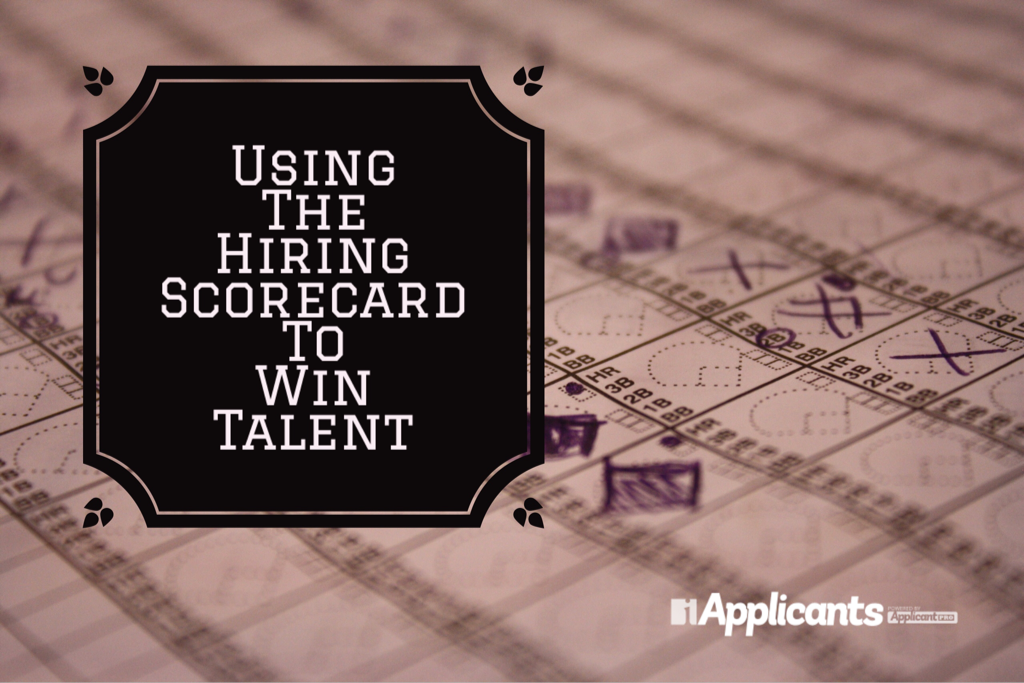by Kurtis Blackburn | Applicant Tracking System, Hiring, Hiring Software

Unless you’re new to the HR world, you likely know what an applicant tracking system is. But on the off chance you don’t, an applicant tracking system is an online tool that eases some of the strain you experience trying to fulfill the high stakes demands of recruiting and hiring top talent. Although the word has spread about using an applicant tracking system significantly over the years, I’ve found that there’s a lot of confusion surrounding what they do and why I think all employers should have them. In today’s post, I thought I’d share the top three misconceptions I’ve stumbled upon since I first started in HR ten years ago: Applicant Tracking System Myth #1 – Using an Applicant Tracking System is Too Expensive One of the common complaints I hear from potential clients is that they can’t afford to purchase an applicant tracking system. Obviously, this concern is a valid one. Typically, the type of individuals drawn to HR tend to be very risk averse and also make very safe decisions which is extremely beneficial when navigating the compliance waters. But when it comes to stepping outside of the compliance box to make more strategic business decisions, it’s beneficial to look outside one’s comfort zone. In business talk, wasted time equals wasted money. Most business executives are fixated on one thing: ROI. If you are currently hiring and attempting to manually perform every step of the process, you’re probably wasting time. In business talk, wasted time equals wasted money. The key to convincing your boss that you need an applicant tracking system in your arsenal is to break the ROI down into tangible numbers. Most quality applicant tracking. . .
by Angie Rupp | Applicant Tracking System, Corporate Culture

The term human capital first stepped onto the scene a few years ago when company innovators began to understand the vital role superstar employees play in executing the organization’s success. What I like most about replacing “employees” with the phrase “human capital” is that it helps employers see that employees are an investment. In fact, employees are the biggest investment your company has made and will continue to make going forward. Understanding the value of your “human capital” will not only help you be a better HR professional, it will also help you appreciate the strategic role you play at your organization. If you’re new to the idea of human capital and how you can better navigate the needs of your company to fulfill its human capital needs, then here are a few items to consider: Before assessing your human capital needs, you need to know your company. Before assessing your human capital needs, you need to know your company. The key to being a more well-rounded and effective HR professional relative to hiring is simple – know everything about your company. In fact, if you contribute to hiring in any way, you should know just as much about the company as your CEO. I realize it’s a bold statement, but here’s why it’s vital for you to grasp: the success of your company is for the most part in your hands. After all, the executive team can only do so much and if they have a specific idea about the direction of the company, it is up to you to hire on the type of human capital that will help execute their mission statement. This brings me to my next point. Human capital needs. . .
by Angie Rupp | Applicant Tracking System, Hiring, Hiring Software, Onboarding

As an HR professional, your individual success at your company is probably impacted by your time-to-fill numbers. The time-to-fill benchmark you’re used to seeing likely has a dollar sign attached to it because the more time it takes you to fill an empty seat at your organization, the bigger the financial investment imparts. For instance, high time-to-fill equals higher costs allocated to your recruiting budget as well as more money invested into the workforce used to support the hiring process. Perhaps more vital from a financial perspective than anything else though is the amount of revenue lost by an empty seat at the company – especially if that seat is a sales based or customer service type position. As an employer, what you’re probably least likely to consider about the potential impact of high time-to-fill is actually not a concern from the perspective of your business, but rather, a concern from the perspective of your applicants. This point of view is often overlooked by corporate recruiters, and yet, its impact has the widest reach because it can easily sour a very strong and talented applicant pool. In 2016 the time it takes to fill an empty seat at a company has jumped from 13 to 23 days. In a recent article from the Wall Street Journal, it was found that time-to-fill numbers have increased significantly from a mere six years ago. In 2010, the average time-to-fill was 13 days. In 2016 the time it takes to fill an empty seat at a company has jumped to 23 days. This makes sense as employers try to nail down a more elaborate and effective hiring process due to the economy picking up again. . .
by Kurtis Blackburn | Applicant Tracking System, Corporate Culture, Corrective Action, Employer Brand

Difficult employees. Chances are we all know one, or even work with one right now. Nothing can drive down productivity and morale like a difficult employee. However, you don’t need to let one abrasive employee ruin it for everyone else. With a little time and patience you can turn that negative Nancy into a productive Peter. Remember, a good conversation can, at the bottom line, help you decrease your turn over Go in with a clear head First and foremost, take a deep breath. Getting upset wont do anything for anyone, and can often make matters worse. So before you go into any sort of interaction with this employee, remind yourself that they do not decide how you’re feeling. Chances are they are already upset, so one of you needs to keep a clear head, otherwise no progress will be made. Remind yourself that you are here, as a representative of the company, and you should compose yourself as such. Screaming and yelling will only result in both of you feeling worse than before, and can often times get you both in trouble. Don’t let one employees negative attitude become contagious. Don’t let one employees negative attitude become contagious. 2. Listen to what they are saying Now that you have taken a deep, cleansing breath, and cleared your head, you are ready for (In my opinion) the most important part: Listening. Something is obviously frustrating this difficult employee, so do both of you a favor and listen. Really listen. You can’t get to the root of the problem until you really know what the problem is. One of my favorite videos on Youtube right now is “It’s not. . .
by Kurtis Blackburn | Applicant Tracking System, Corporate Culture, Hiring, Hiring Software, HR Scorecard, Onboarding

A mere three years ago, developing a hiring scorecard was all the rage in HR. So much so in fact, that you may be shaking your head reading the title of this post, but in reality, there’s a reason that developing a solid hiring scorecard was inescapable. Put simply, it’s the foundation for successful hiring. What I like about it (and what I think contributed to the phrase’s publicity) is that it was one of the first movements challenging HR to view hiring in a different light. Additionally, it forced HR to adopt employment methods that were driven by the strategy of the organization’s goals versus simply to “fill an empty seat” in the company. Jobs and the expectations we attach to them evolve over time. Another reason I think it’s time for a hiring scorecard resurrection is that jobs and the expectations we attach to them evolve over time because companies change over time as well. It’s not as if you can simply create a hiring scorecard for a position and then assume those expectations for that position will carry you for the next ten or even five years because that line of thinking is the same reason the hiring scorecard craze developed in the first place. Lastly, if you’ve struggled with any aspect of your hiring – whether it’s finding the right people, hiring the right people, or keeping the right people around, then the hiring scorecard forces you to reevaluate your process and provides a conduit for change. Now that we’ve spent some time easing you back into hiring scorecard territory, let’s discuss the three steps associated with how to build one. These are the key components. . .
by Kurtis Blackburn | Applicant Tracking System, Corporate Culture, Employer Brand

Thanks to companies like Netflix, in the last few years company culture has become all the rage. Are the people you’re hiring a good fit for your company culture?








